Affiliate disclosure: This post may contain affiliate links. Please see our Privacy Policy.
Black Locust is a fun, edible tree with stunning white blossoms each spring. Foragers and bees alike love the flavor each spring, and they’re fragrant enough that you can find the trees blindfolded.
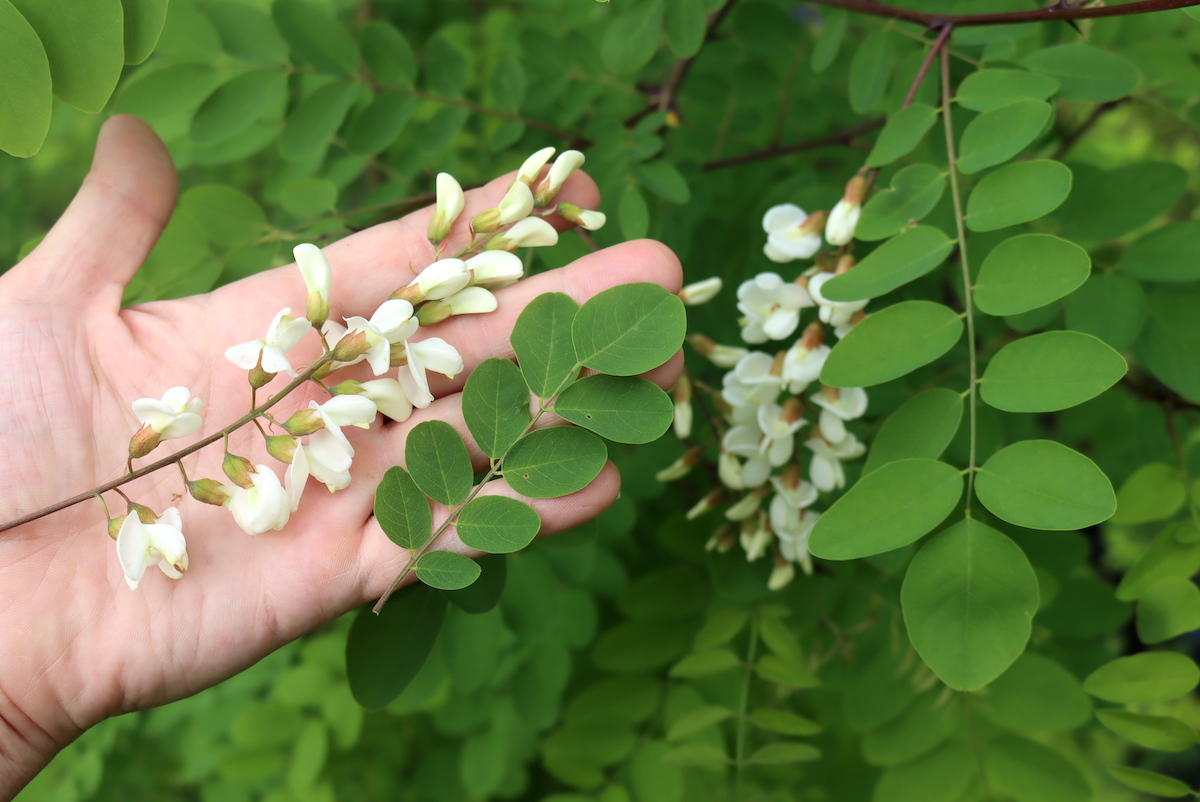
Black locust flowers are a forager’s delight, and they can be harvested by the basketful from these prolific trees each spring.
Bees and humans alike love these sweet blossoms, and they bloom early for a fragrant spring treat.
Whether you’re eating them fresh off the tree, or bringing them home to make salads, teas, cordials, jellies or fritters, they’re well worth the effort.
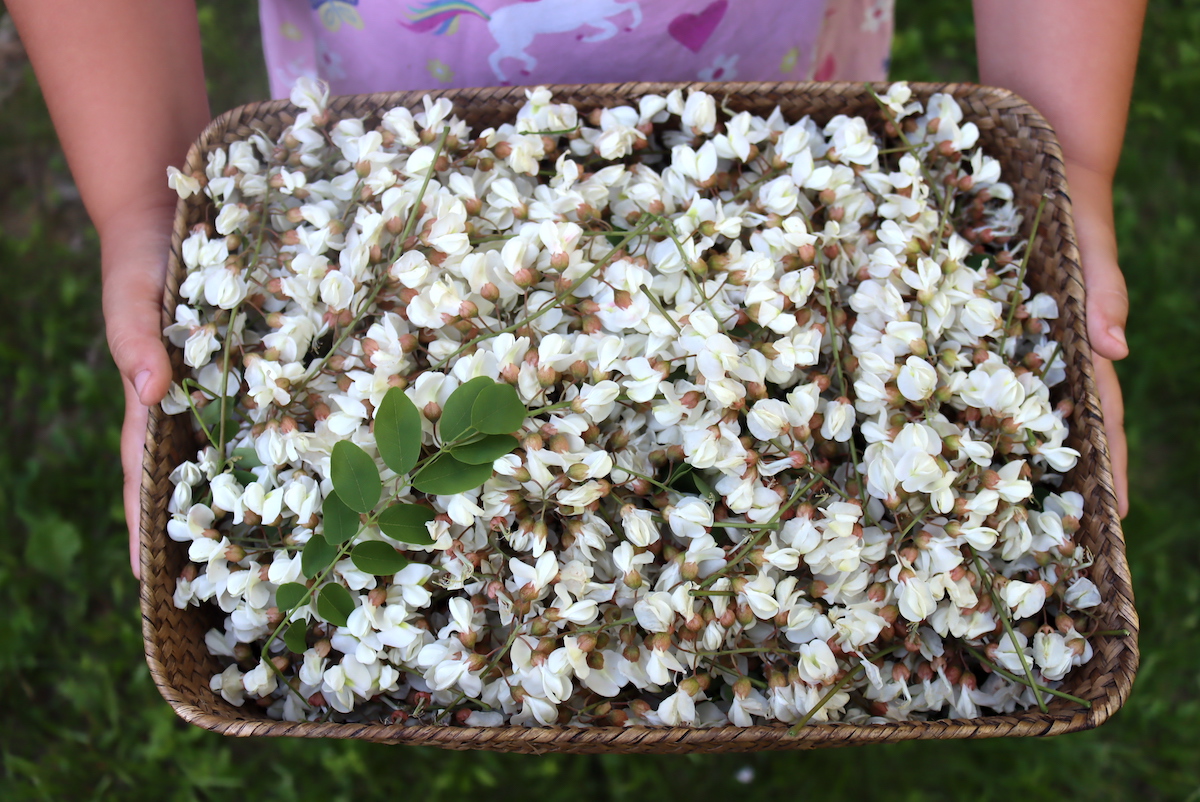
What is Black Locust?
Black Locust (Robinia pseudoacacia) is a medium, deciduous, hardwood tree in the Robinieae subdivision of the the Fabaceae or Legume family. It’s also known as Yellow Locust, Common Locust, White Locust, Green Locust, Pea Flower Locust, or False Acacia.
Black Locust is native to small areas of the United States. However, it has spread to many temperate regions worldwide, including parts of Europe, Southern Africa, Asia, and North America, and is considered invasive in some areas.
Permaculture enthusiasts plant it as a coppice tree and a living fence, and the wood is prized for it’s durability and heating value.
Is Black Locust Edible?
Black Locust seeds and flowers are edible. When harvesting the seeds, you need to shell them as the outer pod is toxic, but the seeds themselves are safe. Some sources report that the seeds must be cooked before consumption, so use with care. The flowers, though, are generally eaten freely without issue.
Most foragers focus on large quantities of tasty flowers since harvesting the seeds can be tedious. The flowers are delicious and safe to eat, raw or cooked. Herbalists also use the flowers in internal preparations like infusions and tinctures.
Black Locust leaves, bark, and wood contain a toxin known as toxalbumin, and are toxic to both humans and livestock. Consuming these tree parts can result in a range of symptoms, from stomach upset to nervous system disorders. Stick to just the flowers if you want to be safe.
Some beekeepers like Black Locust for their bees as it has plentiful flowers, and the honey made from them, known as acacia or locust honey, has good flavor and medicinal benefits.
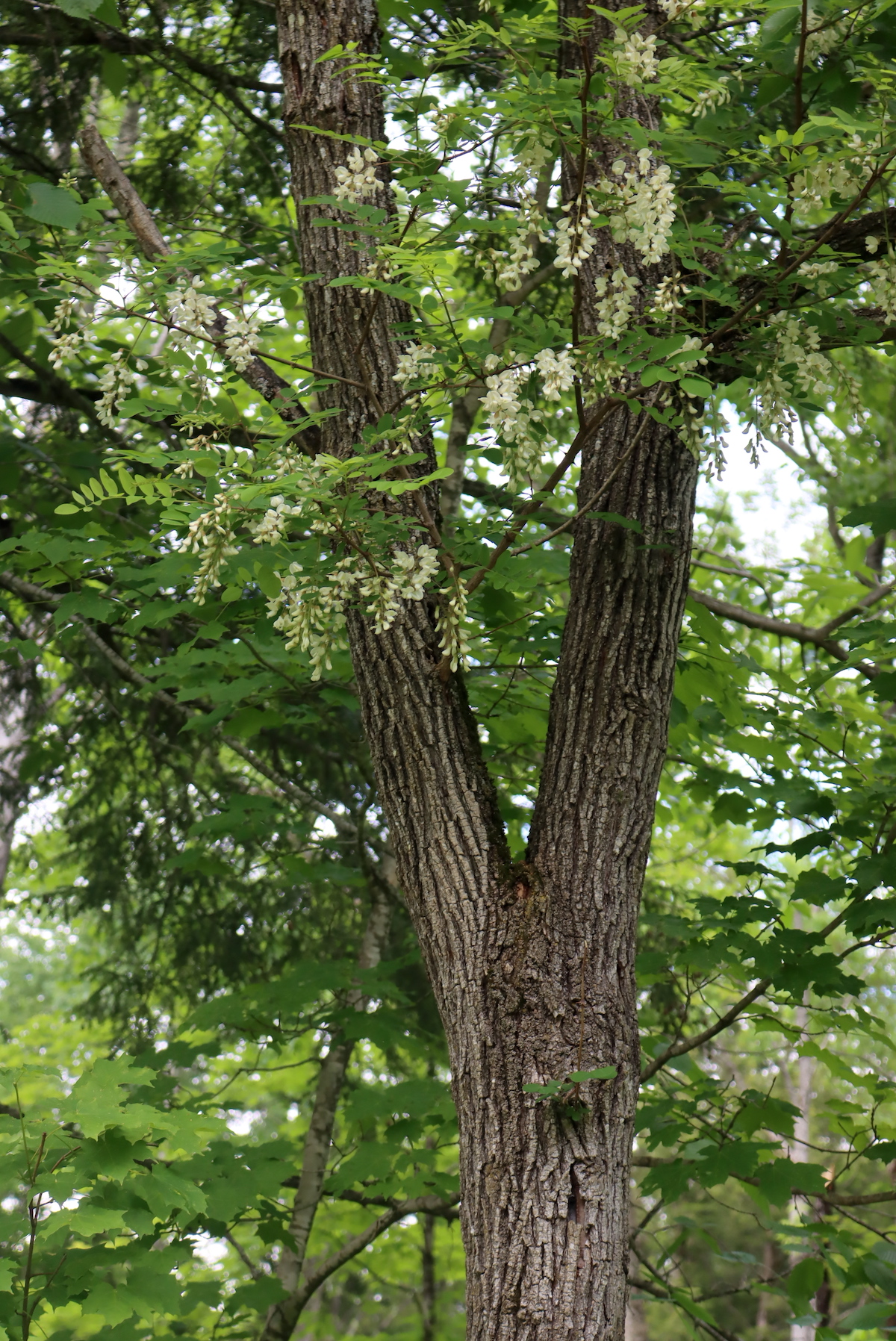
Black Locust Medicinal Benefits
Historically, herbalists have used different parts of the Black Locust in their medicinal practices. For example, folk once used the bark as a purgative and emetic, though today, we know it is toxic.
In India, traditional medicine practitioners sometimes use different parts of the Black Locust as an antispasmodic, diuretic, or laxative. Reportedly, some Native American groups, including the Cherokee, chewed the bark as an emetic and to relieve toothaches.
Most frequently, modern herbalists and natural health practitioners use the safe Black Locust flowers internally and externally. Herbalists have reportedly used a flower extract to treat insomnia, digestive issues, and respiratory problems and as a mild laxative, antispasmodic, and diuretic.
A 2021 study examining a flower extract may support some of these uses. It found that the extract had high antioxidant activity and high potassium and mineral content.
This same antioxidant activity may also be helpful for specific skin conditions. Modern herbalists sometimes employ black locust flower extract externally as an emollient or to help soften the skin. A 2022 study found that the antioxidant and antimicrobial activity of Black Locust flower extract work well in topical preparations.
Aside from the plant itself, herbalists also use honey made from Black Locust flowers, called acacia honey. One promising study found that acacia honey has potent antioxidant and immunomodulatory potentials that may make it a good supplement for cancer prevention and treatment and the therapeutic treatment of Alzheimer’s disease.
(It’s a common misconception that Acacia Honey comes from Acacia flowers, but it does, in fact, come from the Black Locust tree (Robinia pseudoacacia) or what’s known as “False Acacia or American Acacia.” Nonetheless, the honey is still marketed as Acacia Honey, and it’s incredibly delicious.)
Scientists have also found that acacia honey may be helpful for treating injuries. A 2009 study found that acacia honey given orally and topically had significant effects on wound healing in rats.
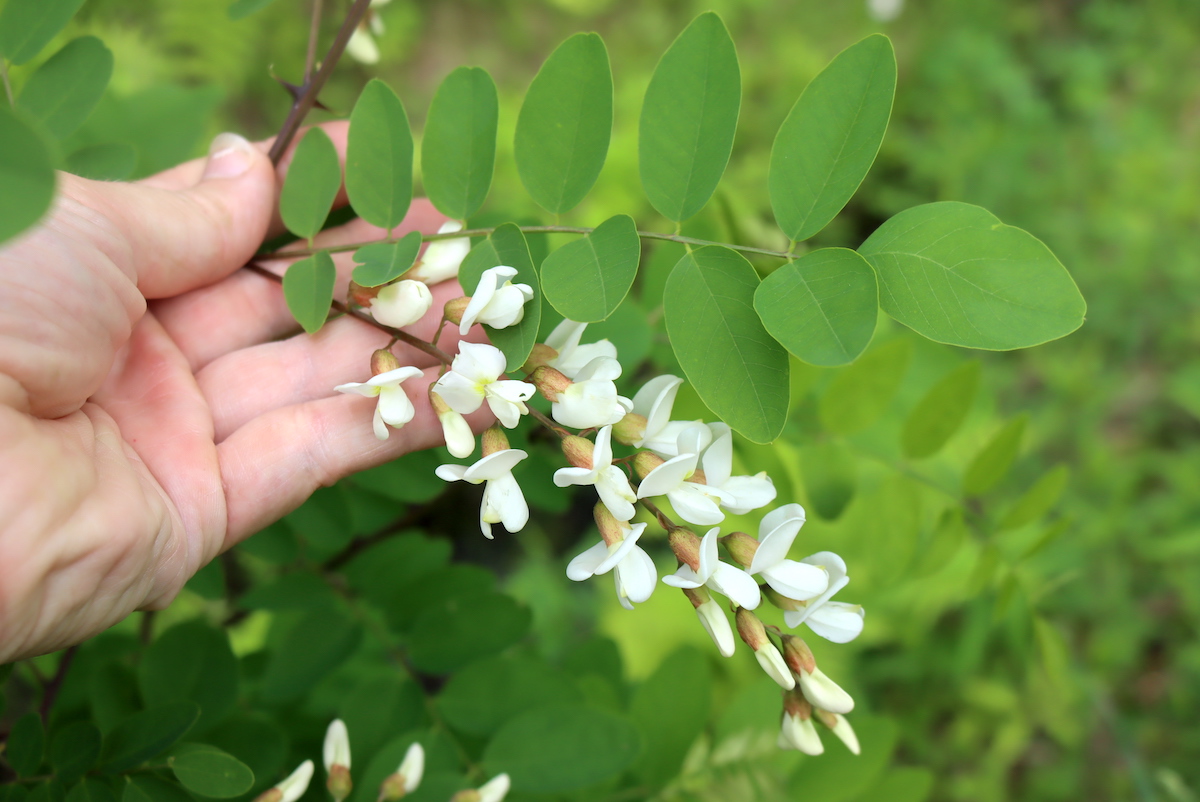
Where to Find Black Locust
Black Locust’s native range is mainly in the eastern United States. It’s considered native from Pennsylvania, south to northern Georgia, and west to Arkansas and Oklahoma. However, it’s often planted as an ornamental and spreads aggressively through its high seed production and root sprouts.
Today, Black Locust can be found in many temperate regions worldwide, including all 48 lower US states and parts of North America, Europe, South Africa, and Asia.
It’s common to see Black Locust popping up in disturbed areas like clearings, roadsides, fencerows, burned areas, pastures, and other openings, as it needs full sun or almost full sun to get established. Black Locust will grow on nearly any soil type but thrives in rich, moist soils.
When to Find Black Locust
Black Locust is a deciduous tree. While you can find it year-round, it’s easiest to identify when the leaves are on during summer.
Most foragers are interested in finding Black Locust when it’s in bloom. In warm southern areas, it may flower as early as April, while in colder climates, it may not flower until as late as June. It happens fast; Black Locust usually only blooms for about 1 ½ weeks.
These flowers eventually give way to seed pods containing edible seeds. The seeds are best harvested in late summer, around July or August, when the pods are full-sized but still green. The seeds can still be eaten in the fall when they mature to brown but may be too tough to be palatable even after boiling.
Identifying Black Locust
Black Locust is a medium-sized deciduous tree that tends to look a little scraggly with an irregularly shaped crown. It spreads aggressively through shoots and seeds, so you will often find it growing in clusters.
Black Locust’s deeply furrowed bark, pinnately compound leaves, and sharp spines can help you identify it. However, the true giveaway happens in spring when the tree blooms. Its abundant showy clusters of white, pea-like flowers are easy to spot.
Black Locust Leaves
Black Locust has green, alternate, pinnately compound leaves comprising 3 to 9 pairs of opposite leaflets plus a terminal leaflet. The leaves are typically 7 to 18 inches long and 4.75 to 6 inches wide. The individual leaflets are usually oval to elliptical and 0.75 to 2 inches long.
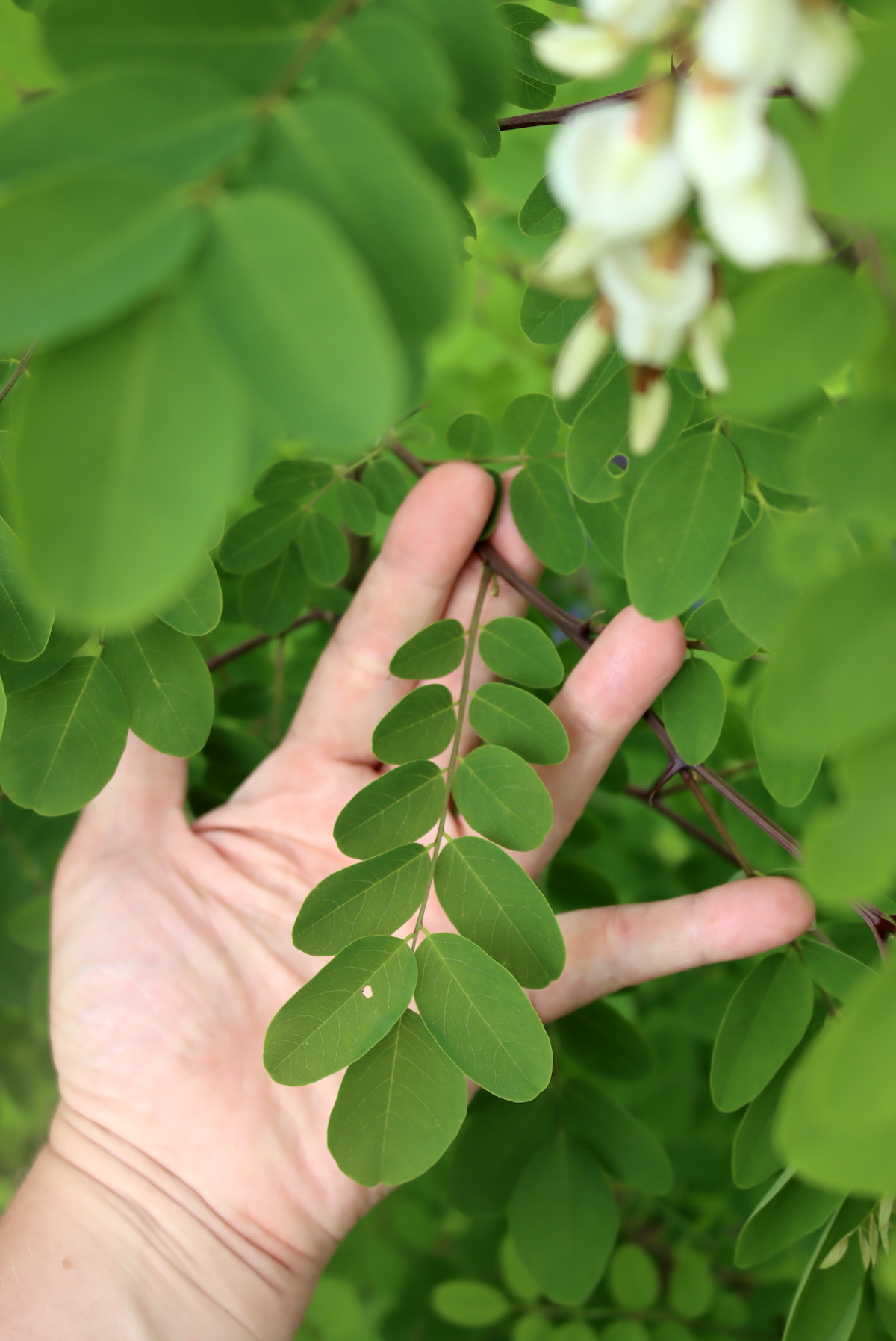
Black Locust Stems
Black Locust trunks may grow to about 80 feet tall and 20 inches in diameter. The main trunk is often crooked and features thick, deeply furrowed, corky, brown bark.
The twigs and small branches are smooth or finely hairy, featuring paired spines at the leaves or leaf scars.
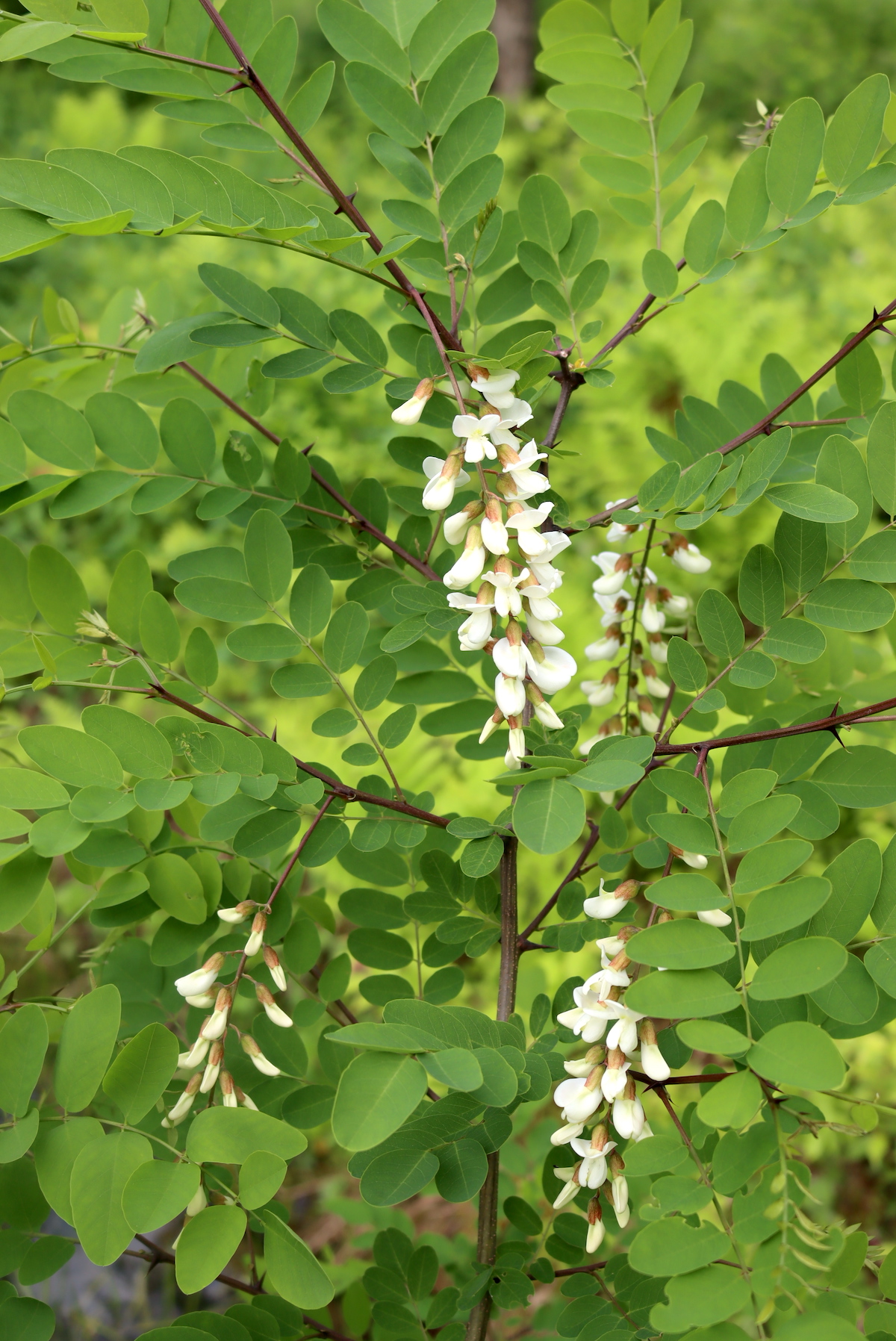
Black Locust Flowers
Black Locust produces loose clusters of 12 or more white flowers up to 8 inches long in late spring or early summer.
The individual flowers are shaped like pea blossoms, about 0.75 to 1 inch long, and feature a yellow spot on their upper petal.
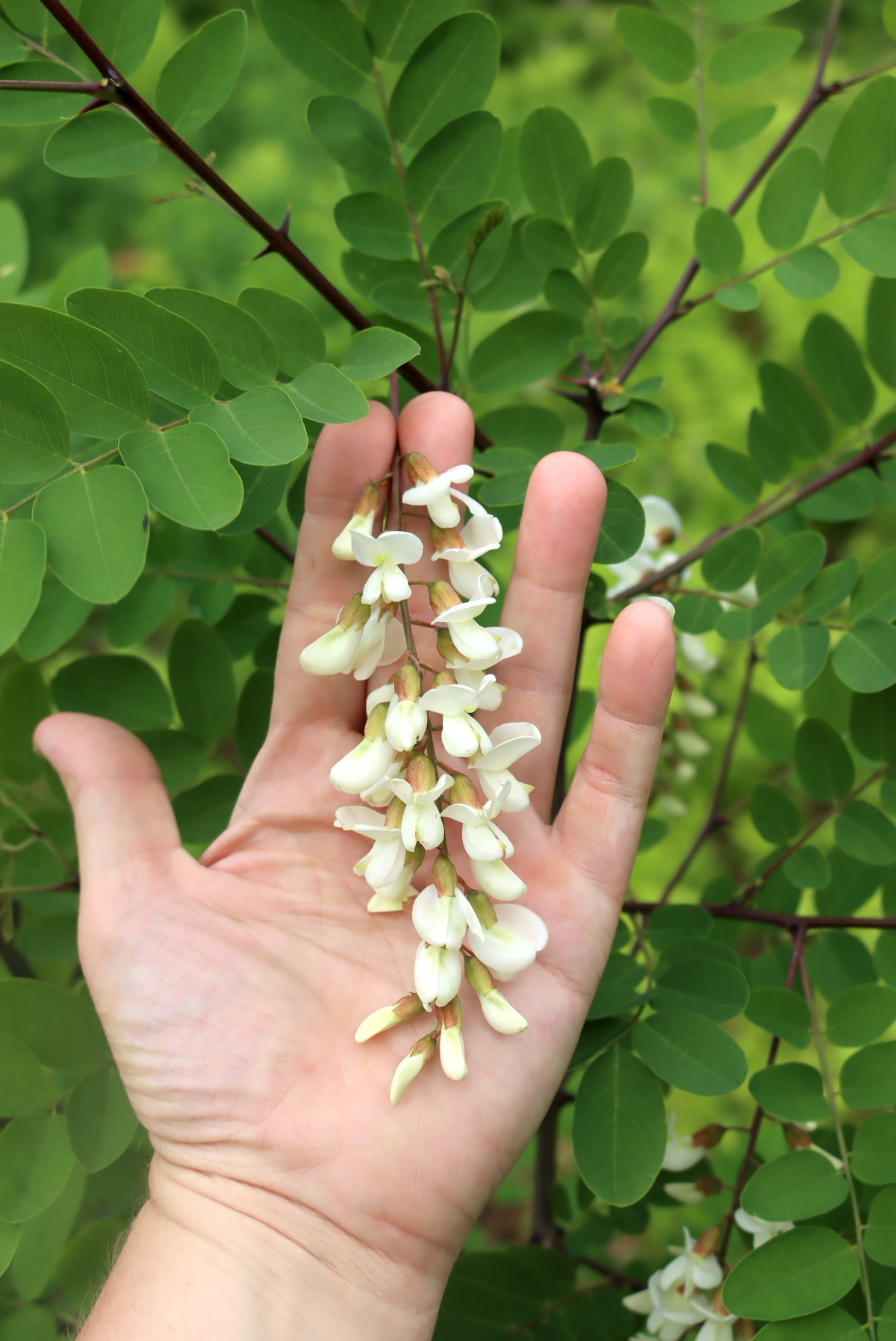
Black Locust Seeds
After flowering, Black Locust produces pea-pod-like seed cases that are usually 2 to 4 inches long. In midsummer, the cases are green or have some purplish coloring. In fall, they mature to dark brown or almost black, dry, and split open to release several seeds. The pods often remain on the tree through the winter.
Black Locust Look-Alikes
Black Locust is sometimes mistaken for Honey Locust (Gleditsia triacanthos). However, Honey Locust differs in several noticeable ways:
- Honey Locust leaflets are narrow and more than twice as long as wide.
- Honey Locust leaves have an even number of leaflets and lack a terminal leaflet.
- Honey Locust has larger thorns, usually 1 to 4 inches long but occasionally up to 8 inches long.
- Honey Locust has greenish or greenish-yellow inconspicuous flowers.
Another lookalike is Clammy Locust (Robinia viscosa). Fortunately, it too differs in a few easy-to-spot ways:
- Clammy Locust leaves have 13 to 21 leaflets.
- Clammy Locust has showy pink flowers.
- Clammy Locust has tell-tale clammy or sticky hairs on the twigs, leafstalks, flower stalks, and pods.
- Clammy Locust is a small tree that usually only reaches 30 feet tall.
Lastly, Black Locust can be mistaken for Chinese Scholartree (Sophora japonica). However, Chinese Scholartree can be distinguished from Black Locust in the following ways:
- Chinese Scholartree leaves have an odd odor when crushed.
- Chinese Scholartree leaves have 7 to 17 ovate or lance-shaped leaflets.
- Chinese Scholartree blooms in late summer and has yellowish-white petals.
- Chinese Scholartree pods narrow between seeds, looking a bit like a sting of beads.
Ways to Use Black Locust
Many foragers find that the best part of the Black Locust is its sweet, aromatic blooms, but you’ve got to catch them at the right time! Black Locust blooms for just 1 ½ weeks, and the flowers are in their prime for an even shorter period.
Harvest the blooms before they’re fully opened or within a few days of opening. After this period, they become bitter. Avoid harvesting when the flowers have dried edges, the yellow spot has faded, or there are many flowers on the ground, as this usually indicates they’re past their prime.
The blossoms are easy to collect and excellent, both raw and cooked. Use them in savory dishes like salads, stir-fries, and fritters like other mild vegetables. You can also emphasize their sweetness and incorporate them into tasty treats like crepes, sorbet, cookies, and muffins. To preserve a big batch, try canning some jelly!
You can also dry Black Locust blossoms for later use. They make an excellent tea even after being dried. As they display some benefits for skin health, the dried blossoms also make lovely additions to herbal soaks and baths.
Acacia honey, Black Locust teas, and tinctures are loaded with antioxidants and healthy minerals. Try incorporating these into your diet for their nourishing effects or as part of your herbal medicine practice.
If you’re up for a challenge, you can also harvest the Black Locust seeds. According to expert forager Same Thayer, these seeds are best when the pods are still green and immature but have reached their full size sometime in late summer. He recommends cooking these as you would other legumes.
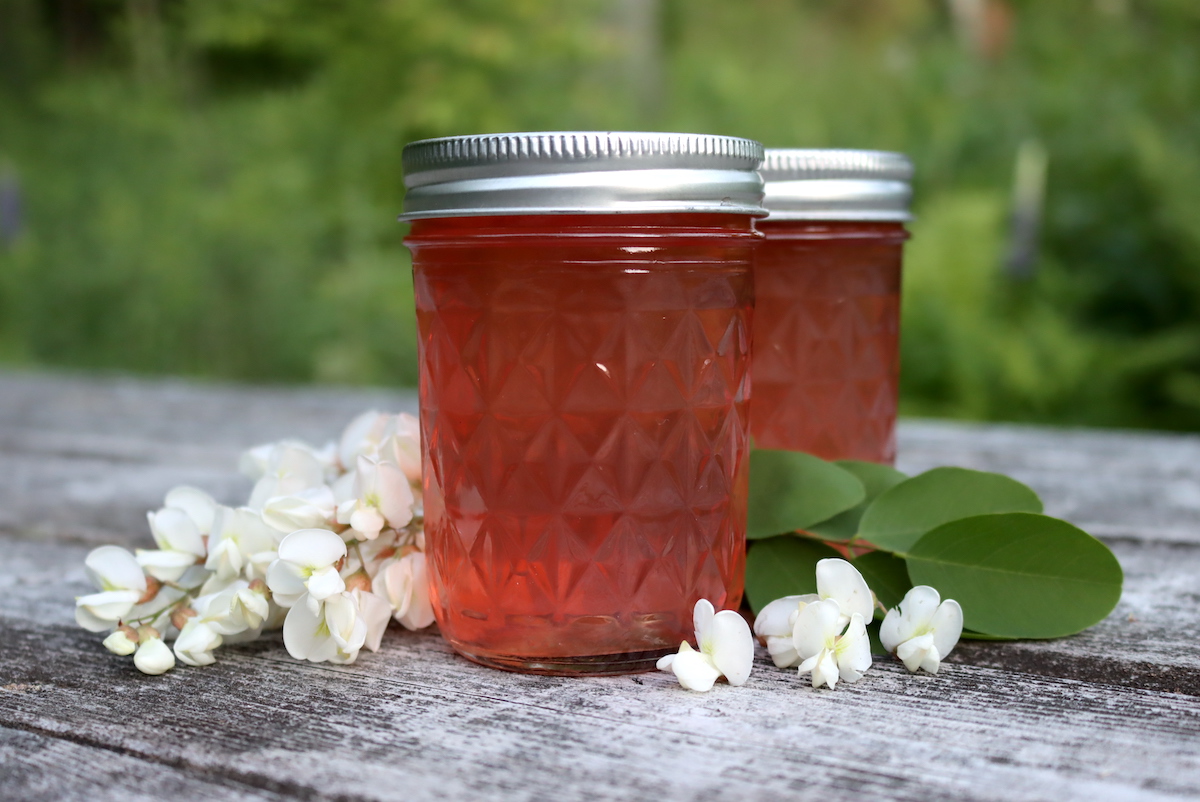
Black Locust Recipes
- Preserve an abundance of flowers with this simple Black Locust Flower Jelly recipe.
- Add a little magic to your day with Miss Wondersmith’s Black Locust Salad and Sea Glass Toast recipe.
- Create an excellent foraged breakfast with this Black Locust Blossom Crepe recipe from West Virginia Public Broadcasting.
- Try one of the Black Locust classics with this Acacia Flower Fritters recipe from Your Guardian Chef.
- Want to add Black Locust Blossoms to your herbal medicine practice? Try this simple Black Locust Flower Cold Brew Tea.
Tree Foraging Guides
There are plenty of edible trees out there, if you know where to look!
- Foraging Linden Trees (Every Part is Edible)
- Wild Foraged Linden Chocolate
- Forging Hop Hornbeam
- How to Make Willow Bark Aspirin
- Harvesting and Using Slippery Elm Bark
- 16 Medicinal Trees (& How to Use Them)
Flower Foraging Guides
Are edible flowers catching your fancy? These will keep your gathering basket full:
- Foraging Yarrow
- Foraging St. John’s Wort
- Foraging Mullein
- 30+ Medicinal Flowers
- 50+ Dandelion Flower Recipes
- 30+ Ways to Use Wild Violets
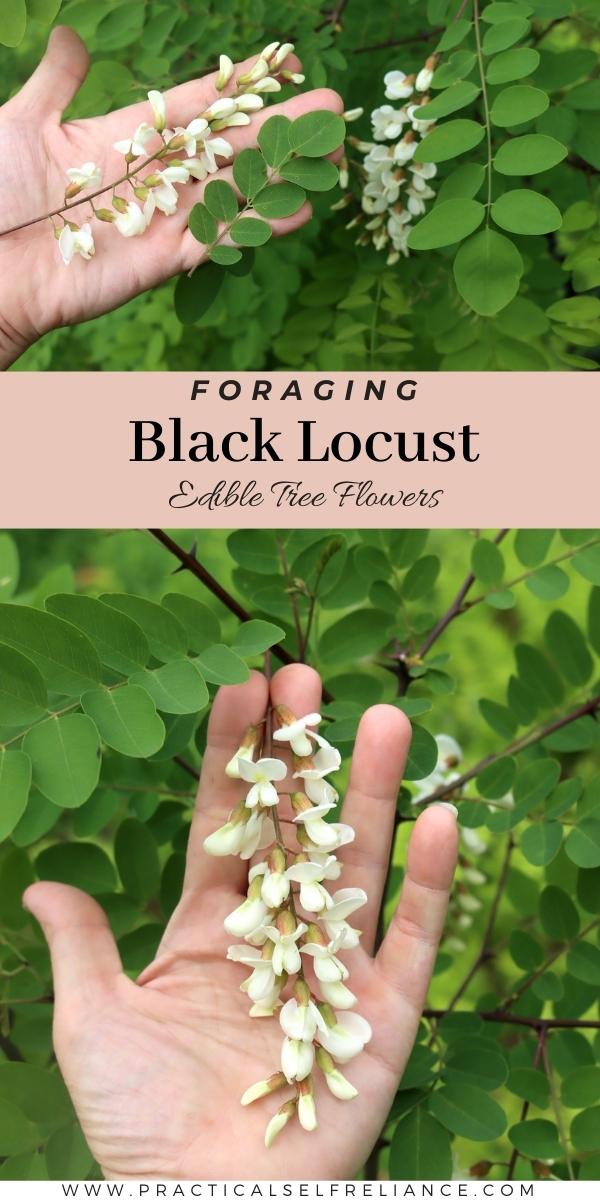
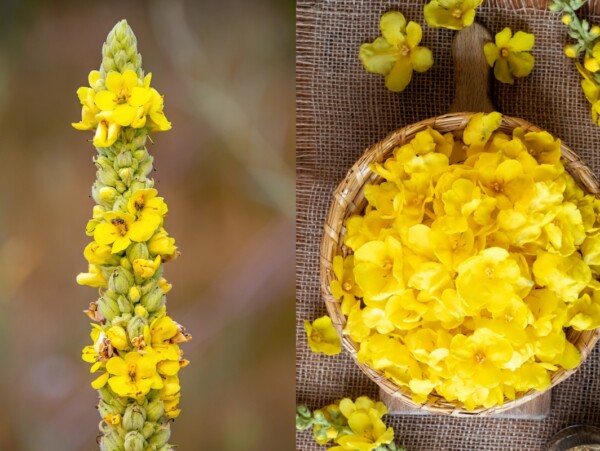
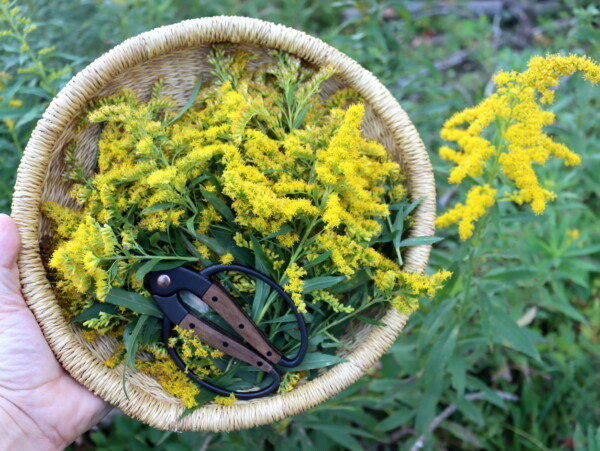
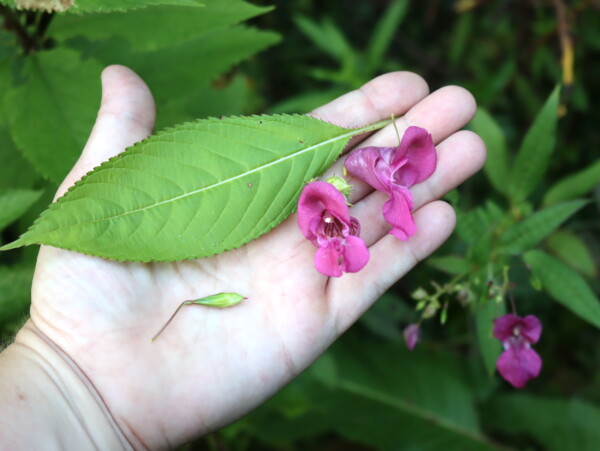
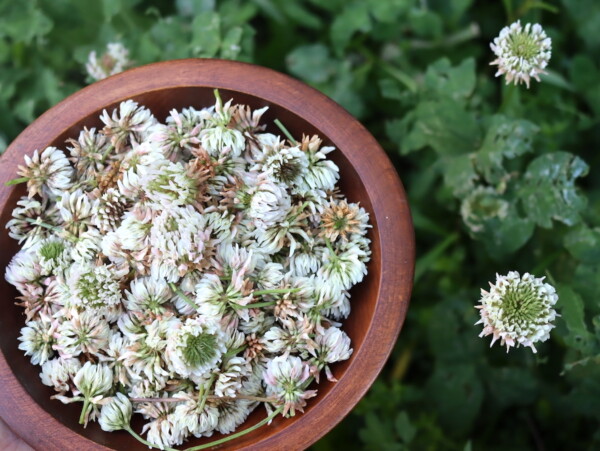










If you are old and crippled up like I am, you can also get a dandy black thorn shillelagh from the locust tree.